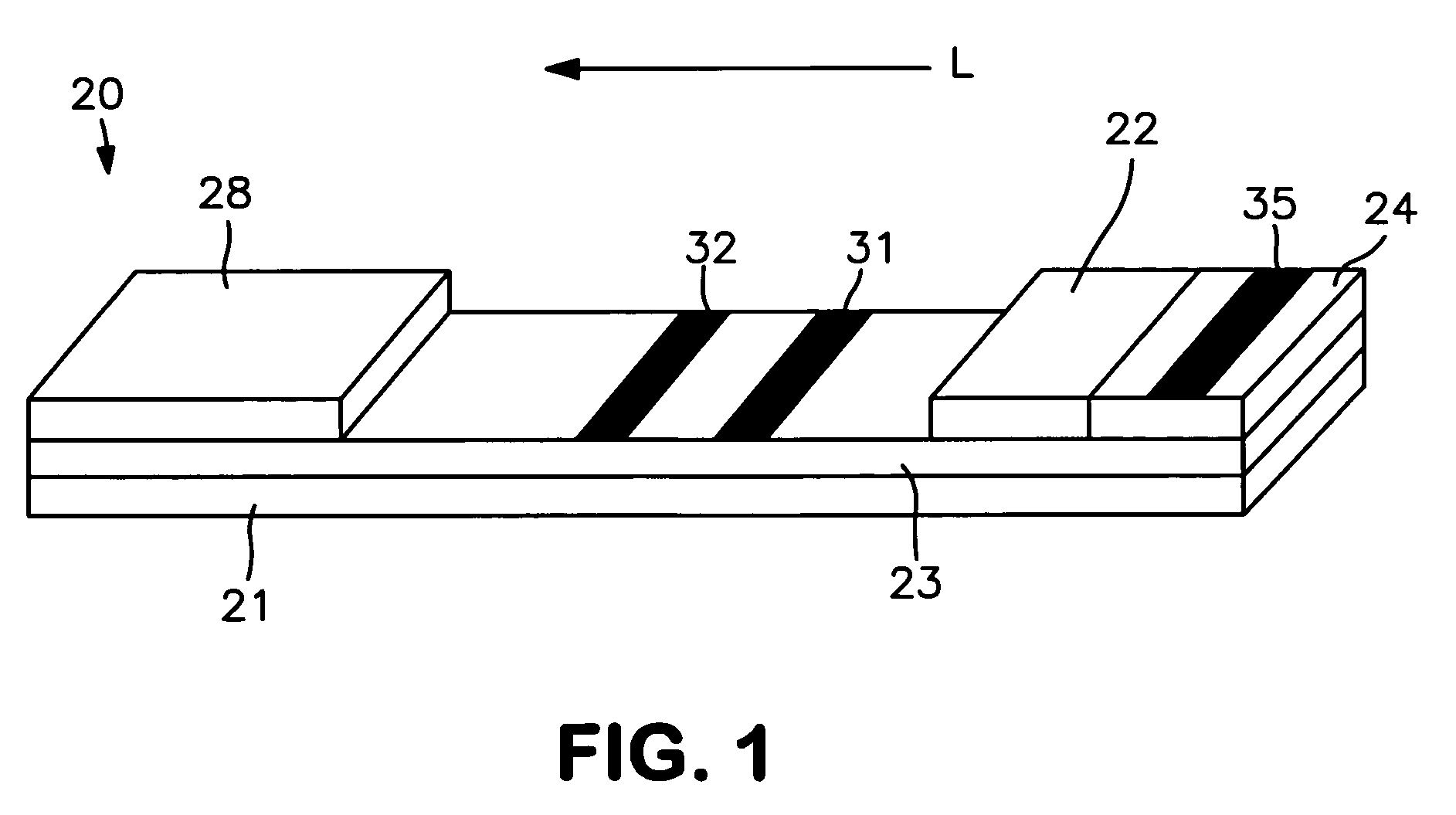Nitrite detection technique
a detection technique and nitrite technology, applied in the field of nitrite detection technique, can solve the problems of difficult diagnosis of uti in the elderly and infants, and is not always feasible to carefully monitor the testing
- Summary
- Abstract
- Description
- Claims
- Application Information
AI Technical Summary
Problems solved by technology
Method used
Image
Examples
example 1
[0040] Aromatic detection reagents were formed by dissolving 1.6 grams of dextran (molecular weight of 15,000, Sigma-Aldrich Chemical Co.) into 50 milliliters of water. 1.6 grams of sodium periodate (NaIO4, Sigma-Aldrich Chemical Co.) in 50 milliliters of water was then added. The resulting solution was stirred overnight at room temperature and dialyzed in water three times. The solution was then dialyzed in 0.1M molar NaHCO3. Dialysis was conducted using a Slide-A-Lyzer Dialysis Cassette tube (3.5K MWCO) obtained from Pierce Biotechnology, Inc. Thereafter, 0.8 grams of the activated dextran in 50 milliliters of sodium bicarbonate (NaHCO3, 0.1 molar) containing 20% dimethyl sulfoxide (“DMSO”) was combined with 0.3 grams of N-(1-naphthyl)ethylenediamine dihydrochloride (“NED-HCL”). The mixture was stirred for 1 hour and 0.4 grams of sodium cyanoborohydride (NaBH3CN) was then added. The mixture was allowed to react overnight. Solid from the reaction mixture was collected and washed wi...
example 2
[0041] The ability to form a lateral flow device was demonstrated. An HF12002 nitrocellulose membrane laminated to a support card (Millipore, Inc.) was provided as the chromatographic medium. To form a detection zone, the DX-NED detection reagent of Example 1 (in 50 millimolar acetic acid solution) was striped onto the membrane. The membrane was dried for 1 hour at 37° C. A reagent pad was then fabricated from a glass fiber pad having a length of 10 centimeters (Millipore Inc.). More specifically, the pad was soaked with 1 milliliter of p-asalinic acid (10 milligrams per milliliter) and oxalic acid (20 milligrams per milliliter) in methanol. The glass fiber pad was then dried at 37° C. for 2 hours and laminated on one side of the membrane. A cellulose pad was laminated to the other side of the membrane card to provide an absorbent or wicking pad. A sample pad was then laminated to the glass fiber pad to provide a sample pad. The reagent pad and absorbent pad were in direct contact w...
example 3
[0042] Lateral flow devices were formed as described in Example 2, except that the reagent pad was prepared by soaking the glass fiber pad with 1 milliliter of sulfanamide (20 milligrams per milliliter) and oxalic acid (80 milligrams per milliliter) in methanol.
PUM
 Login to View More
Login to View More Abstract
Description
Claims
Application Information
 Login to View More
Login to View More - R&D
- Intellectual Property
- Life Sciences
- Materials
- Tech Scout
- Unparalleled Data Quality
- Higher Quality Content
- 60% Fewer Hallucinations
Browse by: Latest US Patents, China's latest patents, Technical Efficacy Thesaurus, Application Domain, Technology Topic, Popular Technical Reports.
© 2025 PatSnap. All rights reserved.Legal|Privacy policy|Modern Slavery Act Transparency Statement|Sitemap|About US| Contact US: help@patsnap.com



